Subtraction can be tricky for 2nd grade students. But add in double digit subtraction with regrouping and 2nd grade students can get lost. That’s why I’m sharing 3 double digit subtraction with regrouping 2nd grade tips so no student fails.

I’ve learned that students find success with 2-digit addition and subtraction strategies when you teach them the mental math skills involved and emphasize common mistakes. I have a FREE guide that outlines those for each 2-digit strategy. Grab your copy here: The Ultimate Teaching Guide for 2-Digit Addition & Subtraction Strategies
Also… If you’re a parent who has a child struggling with math, you’ve got to check out Learner. Learner is an online tutoring platform that sets students up for success. To get started take a short quiz about your child’s needs. Then Learner’s Success Management Team reviews that and matches your child with the perfect tutor. Get your $25 trial here.
Double Digit Subtraction With Regrouping 2nd Grade
Let’s first get into what is double digit subtraction with regrouping. This is the standard algorithm for subtraction. You stack up the 2 digit numbers and subtract the ones and then the tens to get the answer. Students need to regroup the ones if the ones number on the top is less than the bottom. Students can memorize the steps to do this, but I like to make it more meaningful for students. I like to teach it in a way where they actually understand why they are doing the things they are doing to get the correct answer. So let’s get into my 3 tips to make this possible.
Help students understand place value.
The common core state standard says that for 2nd grade math students should fluently add and subtract within 100 using strategies based on place value. When students use the standard algorithm to subtract they are using place value principles. That means students need to understand place value in order to use this strategy.
If you show students the number 47 do they know that it means 4 tens and 7 ones? I like to help students learn this by working with base ten blocks. I give each student a set of tens and ones and then I have them make random 2 digit numbers. They quickly come to see what a 2 digit number actually means. I also like to show students how to draw place value blocks. They use a line to represent tens and small dots to represent ones. I have them practice drawing the base ten blocks to numbers on a white board.
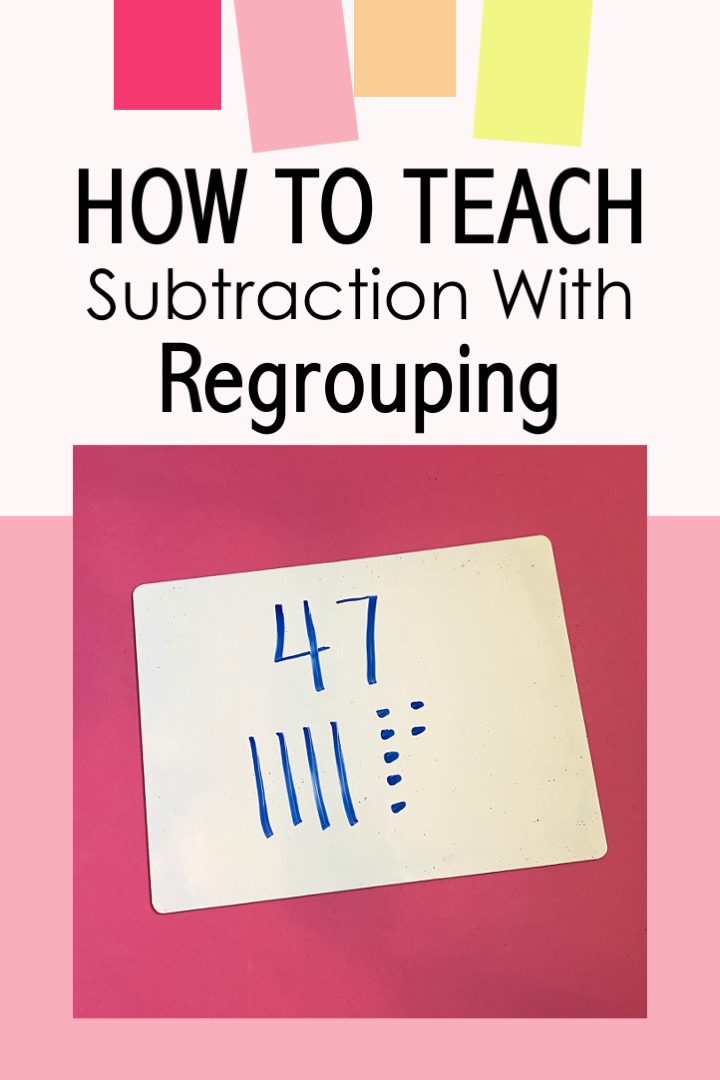
Use place value to help 2nd grade students learn double digit subtraction with regrouping.
Once students understand place value, they are ready to learn how to subtract 2 digit numbers with regrouping.
How to Subtract 2 Digit Numbers With Regrouping
This brings me into my second tip.
Use models for students to understand the steps.
I do this by drawing a tens and ones chart to record my numbers and another tens and ones chart for my pictures. For the tens and ones chart for my numbers, I need 2 regrouping boxes. I put one above the tens and one above the ones column.
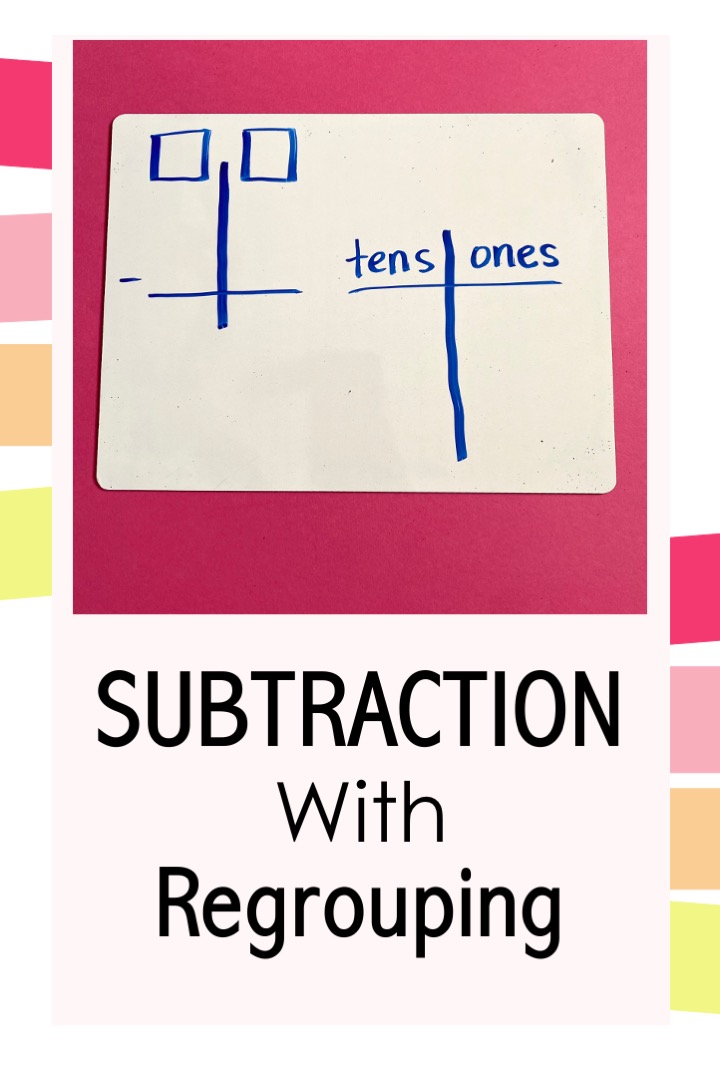
2nd grade students learn 2 digit subtraction with regrouping best when you have them draw pictures with a tens and ones chart.
Then I write in an equation like 47-19. Then we start by drawing the number 47. I draw in 4 ten rods and 7 ones. Then we need to take away the 19. I start with the ones, but I can’t cross off nine ones because I only have 7. I have to regroup a ten to make 10 more ones.
I show this on my model by circling a ten and drawing an arrow over to my ones. Then I draw out 10 ones by the 7 that were already there. Now I have 3 tens and 17 ones. I need to record this on my numbers tens and ones chart. I cross out the 4 and put a 3 up above. I cross out the 7 and put a 17 in the regrouping box above my ones.
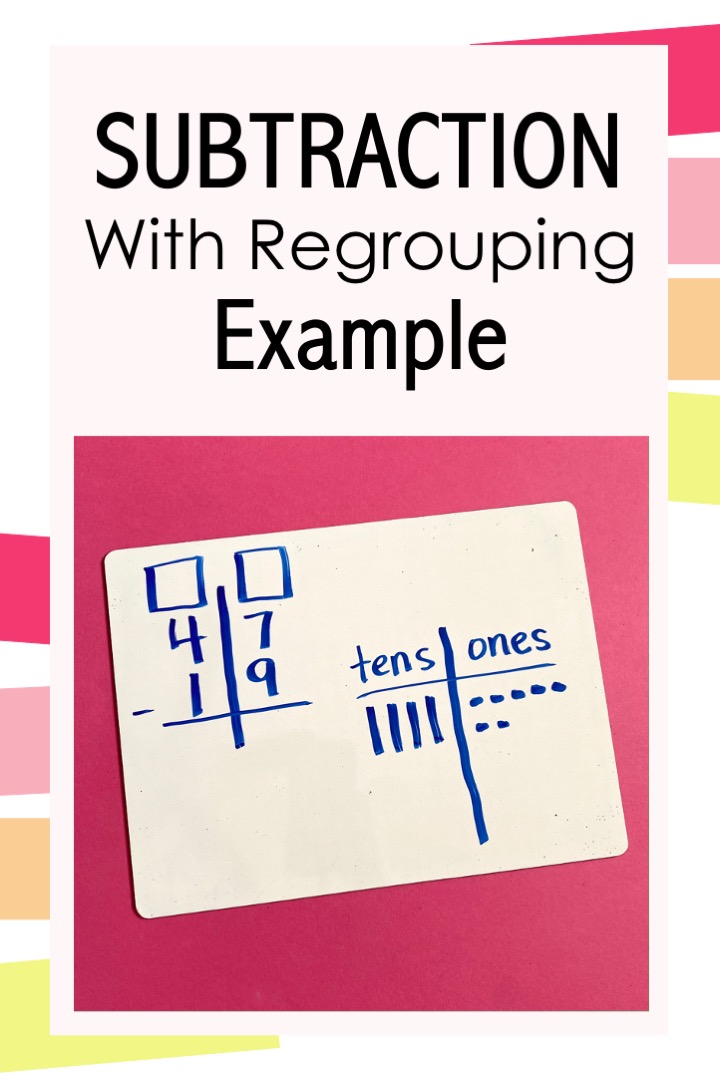
Use this subtraction with regrouping example to help students learn the standard subtraction algorithm.
Then back to the picture, I can cross out 9 ones. That leaves me with 8 ones. Then I subtract 1 ten by crossing off a ten. Then I record this on my over tens and ones chart. 17-9=8 and 3-1=2 so the answer to 47-19 is 27.
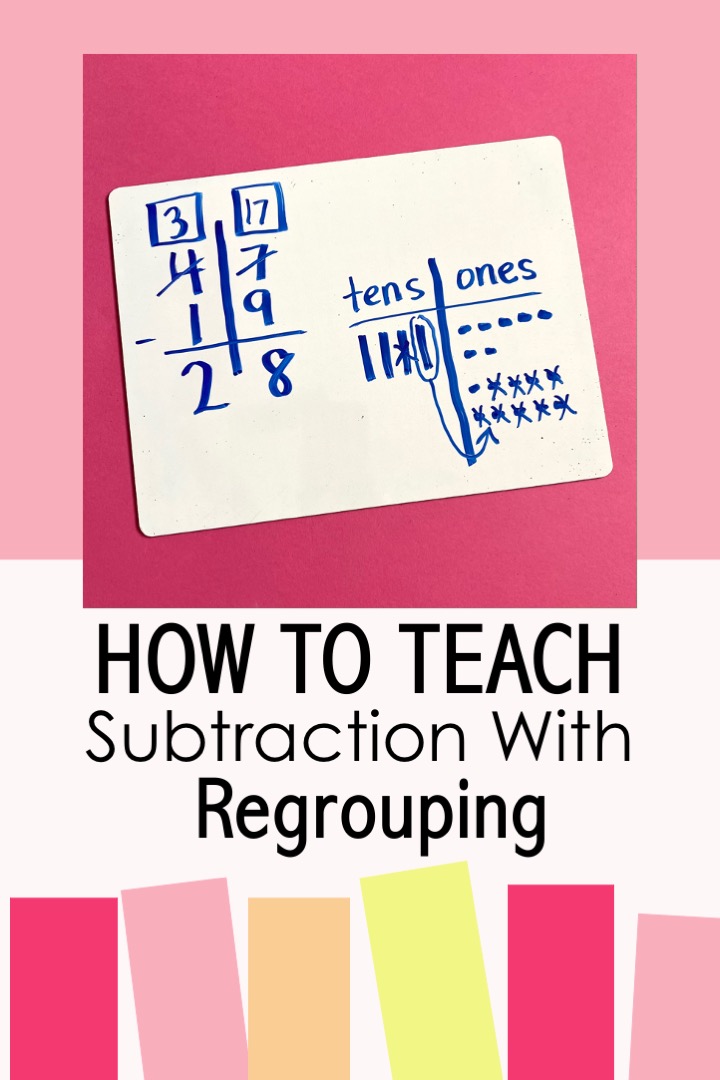
Wondering how to subtract 2 digit numbers with regrouping? Draw pictures and a tens and ones chart first.
After I show my students a few examples of me doing this with problems where you need to regroup and problems where you don’t need to regroup, I let my students practice with me. This is our guided practice part of the lesson.
I give students a worksheet and we draw the pictures and solve the equations together. These worksheets are nice because they have the tens and ones chart there for students. Find the worksheets I use here.
Then students are ready for independent practice.
2 Digit Subtraction With Regrouping Anchor Chart
Hang up an anchor chart and give students lots of practice.
To help give students the support they need for independent practice I like to hang up a 2 digit subtraction with regrouping anchor chart for them to refer to. These anchor charts are more meaningful to students when you make it with them. I draw the tens and ones chart and solve a problem together so students can easily see the steps.
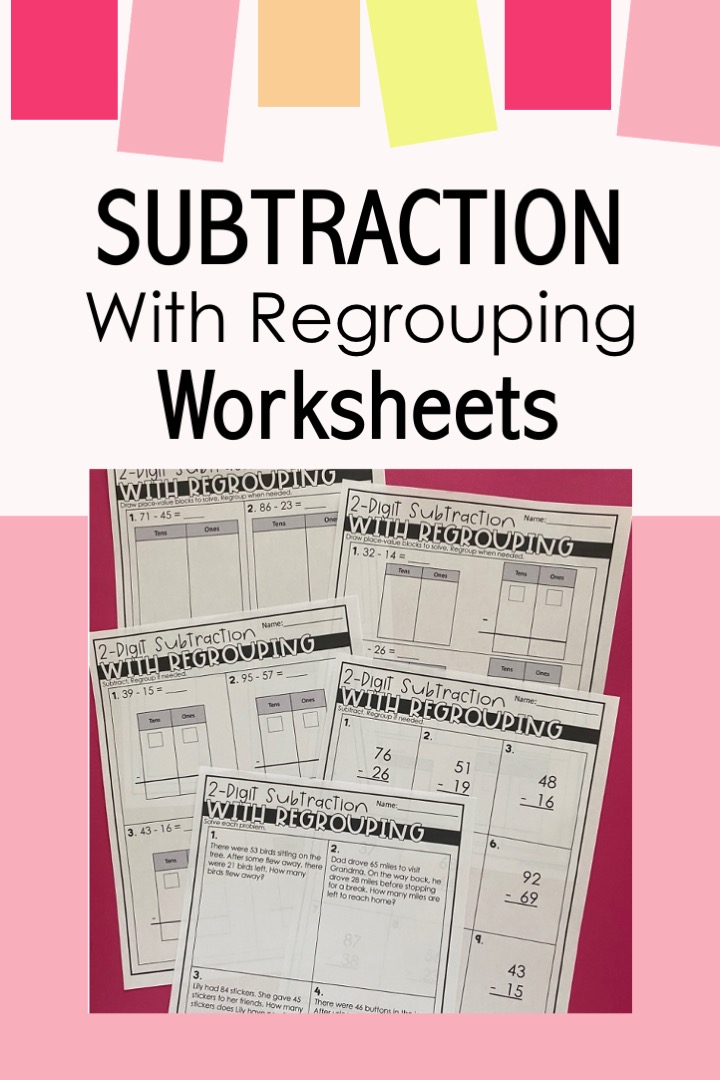
These 2 digit subtraction worksheets help students learn how to subtract with regrouping in a scaffolded way.
When I get students out of their seats and moving by having them complete a scoot activity. I place double digit subtraction problems around the classroom and give students a recording sheet. They go around the room to solve the problems. I walk around observing students and giving any guidance needed.
Find the scoot activity I use here.
By helping students understand place value, using models, and giving students lots of practice you help set your students up for success when it comes to double digit subtraction with regrouping.
The day after I teach with models I help my students solve without drawing the pictures. I again solve problems with my students and then give them independent practice with a scoot activity. Find these activities here.
This is only one subtraction strategy I teach my students. To learn more about these other strategies, read this blog post: How to Teach Those Tricky 2 Digit Subtraction Strategies
Students are much more successful with 2 digit subtraction when they are fluent in their basic subtraction facts. I have a free guide for 1st and 2nd grade students to help you get your students to math fact mastery: The 7 Steps to Ensure Math Fact Fluency

Download your free copy here.


